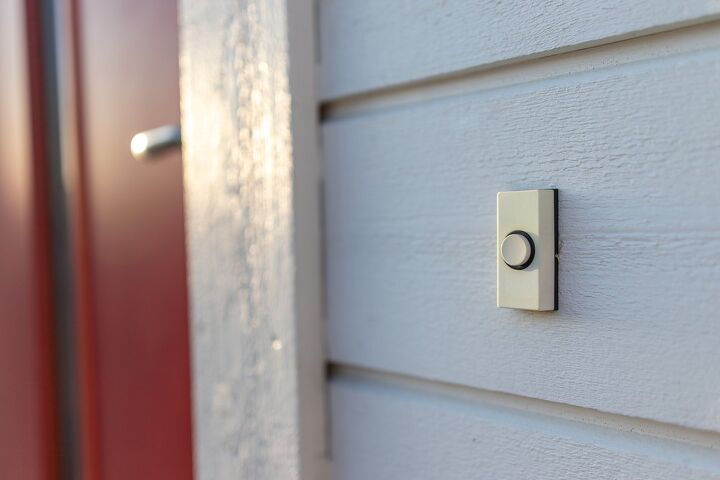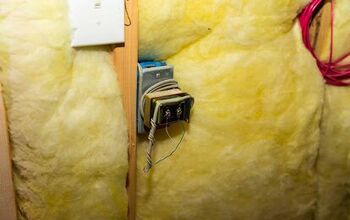Which Circuit Is The Doorbell Usually On?

Doorbells are a simple, albeit important fixture of modern homes that are typically reliable and low maintenance. Things can still go wrong with a doorbell despite the simplicity, so it’s important to know basic electrical information about your doorbell. So, which circuit is the doorbell usually on?
There is no ironclad rule for which circuit a doorbell is on because it varies between houses. Doorbells don’t have a strong enough current for them to need their own circuit as long as the transformer is in working order. You can generally find a doorbell’s circuit breaker near the security alarm, in a utility room, or even in a storage closet.
It is important to identify which circuit the doorbell is on so that you can reset it if it trips. Track the wires to find the circuit breaker and transformer if they are exposed, and call a professional if they are within the wall. Follow along as we explore which circuit the doorbell is usually on and see why it is important.
Where is the Doorbell Circuit Breaker Located?
Doorbell circuit breakers are located near your security alarm keypad or touch screen in most modern homes. They are also sometimes located near laundry connections, water heaters, and your HVAC system. A circuit breaker can protect your doorbell and transformer from damage and electrical overloads.
Doorbell circuit breakers can be difficult to find, but there are several tricks you can use to find them quickly. Check storage closets, the spaces underneath staircases, and in utility rooms for the circuit breaker. It’s important to know where your doorbell’s circuit breakers is just in case it trips or you have electrical problems.
Track the wiring from the doorbell to the circuit breaker if you struggle to find it in obvious places. The wires will either be within the wall or left exposed depending on how the doorbell was installed. Call a professional if you have limited electrical experience so that you don’t inadvertently cause expensive damage.
Does a Doorbell Need its Own Circuit?
A doorbell doesn’t need its own circuit because it doesn’t produce a significant enough current. Doorbells don’t have nearly as high of an electrical current as heavy-duty household appliances. For example, large appliances like refrigerators and water heaters need their own circuit because of the intense electrical demand.
That isn’t the case with doorbells because they only run at 12-14 volts in most cases for a modern unit. Stoves, by comparison, often run at 240 volts and that’s why they typically need a dedicated circuit. Even modern doorbells with cameras and 2-way speakers don’t need a dedicated circuit because they rarely exceed 16 volts.
You may experience electrical problems that have nothing to do with your doorbell and everything to do with the circuit. This is common because doorbells share a circuit with common devices like computers and televisions. The combined electrical load of all of these devices adds up the circuit that your doorbell is on and can easily trip.
Where is the Doorbell Transformer?
You can typically find the doorbell transformer on a basement, garage, or attic exterior wall. It varies based on the layout of your house, but you won’t ever find the transformer too far from the doorbell. Look at the top of the wall on the inside part of an exterior wall.
The doorbell transformer is often close to the ceiling, especially if it is located in the basement. Doorbell transformers are found on the electrical junction box, and they are generally quite small. Transformers lower the voltage so that your doorbell doesn’t use too much current.
Modern doorbells often run at 12-14 volts, whereas old models ran at 6-8 volts. You can cause damage if you install a modern doorbell that is too much for your circuit or transformer. Many modern doorbells have smart features such as a camera that can increase the voltage.
No Power to Doorbell
The first thing that you should do is check the circuit breaker if your doorbell has no power. Locate the circuit breaker in your utility room, near your security alarm, or in a storage closet. Check to see if any switches have tripped, and reset them if so to restore power to the doorbell.
There may be serious damage if the circuit breaker tripped and resetting it does nothing. You can tell that the problem is your doorbell if resetting the breaker restores power to other electrical devices on the circuit. Don’t push your luck and continually reset the breaker because you may damage it or the other devices on the circuit.
Electrical devices sometimes go completely bad after a power surge which can trip the breaker. Surges and electrical overloads can render a doorbell useless in many cases, and you’ll need to fix or replace the doorbell. It costs an average of $356 to replace a doorbell when you hire a professional between material costs and the labor rate.
Do I Need to Turn Off the Power to Change Doorbell?
Turn off the power when you change the doorbell to avoid electrical shock. Doorbells can run at up to 16 volts depending on their features, and that’s enough for a dangerous shock. Always turn off the power anytime that you work with wires you can cause physical harm and electrical damage.
With that said, you can test a new doorbell with the power on without risking physical harm. DIY doorbell installation isn’t too difficult, but it is worth the cost to hire a professional. Professionals can install a doorbell without damaging the transformer or circuit.
The electrical shock from a doorbell isn’t always lethal, but it certainly can be if you have existing health problems. Either way, the shock can be painful, cause nerve damage, and even burn your skin. This is the best practice when you install or adjust any electrical appliance and device in your home.
Summing It Up
Doorbells never have their own circuit because they don’t have a high enough electrical demand. They only run at 12-14 volts in most modern applications, and they previously ran at 6-8 volts depending on the model. Because of that, doorbells are always located on a circuit that is shared amongst several electrical devices in the general vicinity.
Check to see if your doorbell’s wiring is exposed or within the wall to help find which circuit it is on. Exposed wires are easier to keep track of, but they aren’t as durable as wires that are concealed and run through your wall. Doorbell circuit breakers are often located in a utility room or storage closet depending on the layout of your house.
The transformer is just as important as which circuit the doorbell is on because it makes your doorbell safe. Transformers adjust a doorbell’s voltage to ensure that the circuit can handle it without causing a surge and overload or tripping the breaker. Hire a professional if your doorbell still doesn’t have power after you reset the circuit breaker.
Related Guides

Nick Durante is a professional writer with a primary focus on home improvement. When he is not writing about home improvement or taking on projects around the house, he likes to read and create art. He is always looking towards the newest trends in home improvement.
More by Nick Durante



























